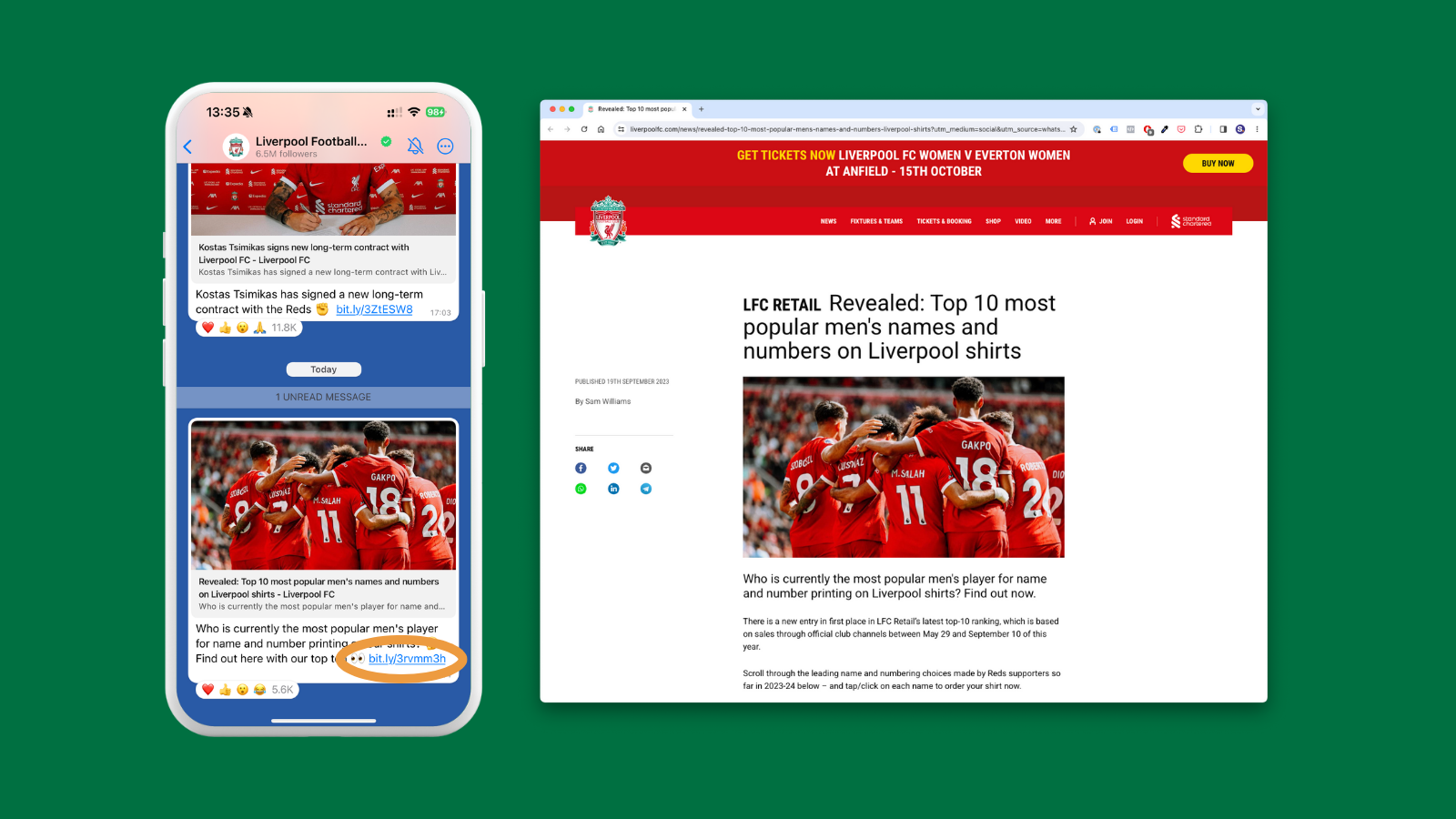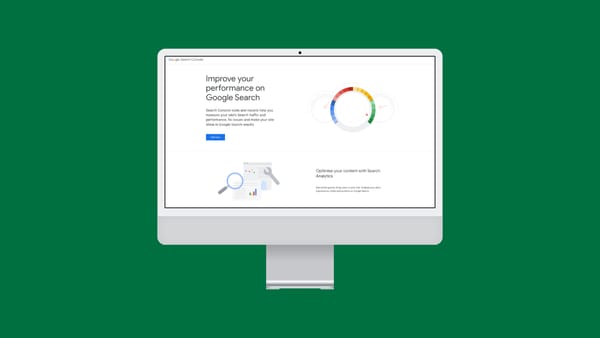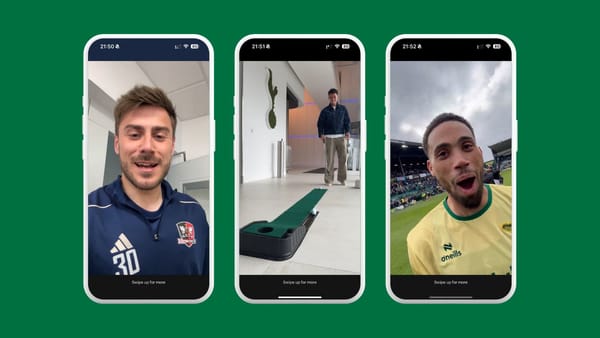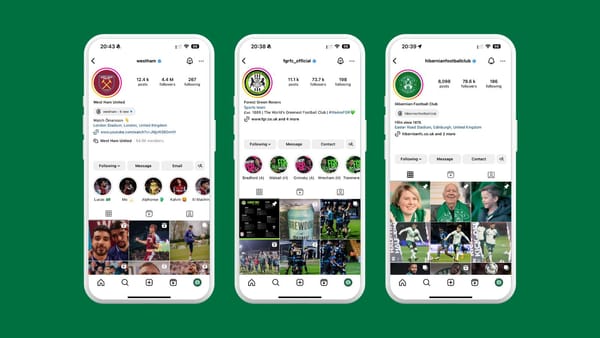Broadcast channels: What are they? Are they a good idea for clubs to use? And how can you measure if they're working?
Meta have launched two new channels clubs can use to publish content on. But, should you? And how will you measure how they're performing?

This week has seen the launch of two new features among Meta's platforms: Instagram's Broadcast Channels, and WhatsApp Channels.
Both are fairly similar. Each one allows you to post a message to your followers - whether it's a link, an image, a video, or something interactive such as a poll. Followers can react with any emoji of their choice.
While WhatsApp's roll-out has been more subtle - I had no idea it existed until someone messaged me to ask about it - Instagram's was very obvious by the number of notifications people started receiving from every account they followed that launched their channel. Turns out notifications for messages from broadcast channels are on by default, so use that first message wisely.
As usual, clubs have been quick to embrace the new tools. Teams such as Roma, Juventus, Bayern, West Ham, Crystal Palace, and Nottingham Forest have been active on Instagram over the last few days (some more than others). Over on WhatsApp, Everton, Liverpool, Sunderland, Rangers, and Leeds are among the early adopters.
Clubs like Barcelona and Real Madrid have been active on both, however after a few days there hasn't been too much crossover - most teams appear to be choosing one or the other. That's surprising given the similarities between them.
But, importantly, are these a good thing for sport?
When is it right to broadcast?
A space where your club can be in complete control of a message and not be subject to abuse or criticism sounds like nirvana for social media managers. We've all seen the comments directed towards social media accounts on normal days.
With a broadcast channel there's none of that. People are limited to reacting with an emoji, and that's it. You should think of it in terms of an SMS notification, or even along the lines of email marketing. A good place to share team news, interviews, or maybe limited content from a match day.
I'd argue that broadcast channels should be used sparingly, and only when there's something of broad appeal to a wide range of your fanbase. Changes in fixture dates, team news, match results - all these fit the bill. They're either things that could impact a supporter's plans or they're crucial to your existence (if teams didn't play matches they probably wouldn't last too long).
What they shouldn't be used for are as a replacement for two-way engagement and interaction. Or for 12 notifications a day with the kind of content you publish on other social channels. In the same way you wouldn't send 12 emails a day to fans - or shouldn't be, and if you are you should maybe rethink that approach - I would suggest keeping a broadcast channel similarly sacred.
How to check the success of your channels
As with anything new, you'll want to make sure you're properly tracking how links are performing on Instagram and WhatsApp. If you're using an analytics platform like Google Analytics you will have seen channels such as "Organic social" in your acquisition reports.
The danger with a lot of new tools is that they get categorised incorrectly as "Direct" in these reports. I haven't been able to test this as I don't have access to either channel yet, but my assumption is that WhatsApp Channels could get lumped in with direct traffic. Instagram should be OK.
To attempt to fix this, Liverpool have made use of UTM links to make sure their traffic from WhatsApp gets counted correctly. In the example below, you can see them sharing a link to their Channel, with a bit.ly URL at the end of it. Clicking this takes you to a page on their website.

A closer look at the URL reveals it looks like this (you'll have to scroll to the right in the box to see the full thing).
https://www.liverpoolfc.com/news/revealed-top-10-most-popular-mens-names-and-numbers-liverpool-shirts?utm_medium=social&utm_source=whatsapp&utm_content=lfc-organic-social-ad&utm_campaign=med-lfc-whatsapp-messages&utm_proposition=lfcIf you separate the parameters (the bits after the ? and each &) by each line, you get the following.
https://www.liverpoolfc.com/news/revealed-top-10-most-popular-mens-names-and-numbers-liverpool-shirts?
utm_medium=social&
utm_source=whatsapp&
utm_content=lfc-organic-social-ad&
utm_campaign=med-lfc-whatsapp-messages&
utm_proposition=lfcWhat does this tell us? That everyone who clicks on the link in WhatsApp gets tagged as coming from a social channel (utm_medium), identified as WhatsApp (utm_source), and is also put into a bucket for a specific campaign (utm_campaign). What's clear is every visitor from that URL can now be separated and looked at in isolation in an analytics platform - so they'll know very soon whether WhatsApp performs better or worse than other social channels.
This means they can see things like the below (if they're using Google Analytics 4).

The main points of interest are the campaign names, the number of sessions generated, and then the far right column which shows how much revenue is attributed to that channel.
The beauty of this is you're then able to provide real, actionable data to decide whether it's something you should be persisting with. It's only possible if you've got an analytics platform set up and working across your website, ticketing, and retail systems.
Some useful further reading:
- Google's advice around UTMs and applying them to URLs is on their website.
- Instagram's original announcement about Broadcast Channels.
- What WhatsApp had to say about Channels when they were first announced.
- If you need any help setting up Google Analytics 4, or configuring it to track your retail and ticketing sites, you know where I am.





